American Buttercream
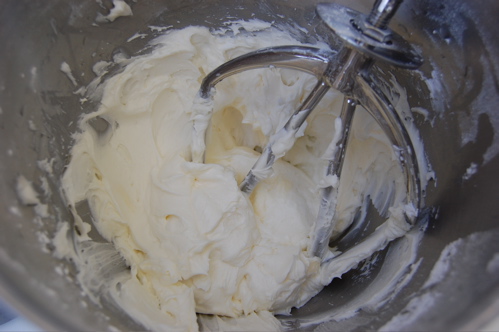
Once you see how this is made, you won’t wonder why American-style buttercreams have become the new standard — even in upscale bakeries — all over the world. OK, maybe not in the pâtisseries of Paris, but pretty much everywhere else. The reasons are primarily functional. Not only are the buttercreams in this family a snap to make, they stand up to adverse conditions that cause traditional all-butter buttercreams to run down and collect in pools on buffet tables. From the standpoint of commercial bakeries, therefore, they are a godsend. For the the rest of us…eh, not so much. The basic formula is this:
8 ounces soft butter
4 ounces room-temperature vegetable shortening
1 pound powdered (confectioner’s) sugar
1-2 tablespoons water
Begin by putting both your fats in bowl of of a stand mixer fitted with the paddle (beater) attachment.
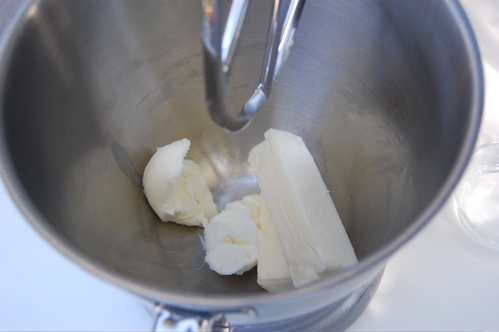
Beat until the two are incorporated and somewhat creamy.
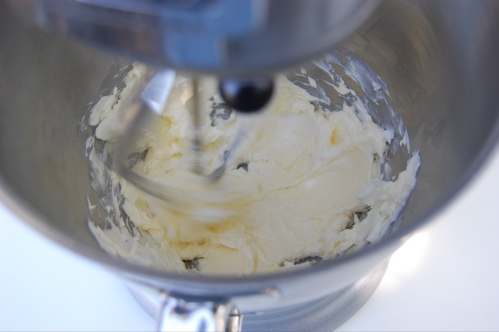
Now add the powdered sugar in a steady stream.
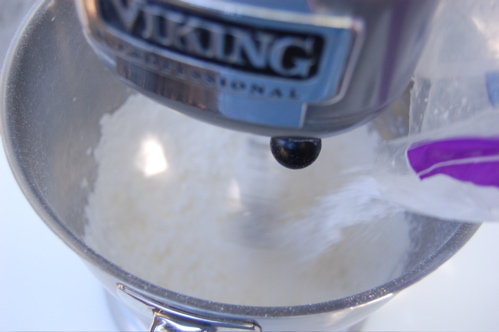
Beat until it’s all incorporated.
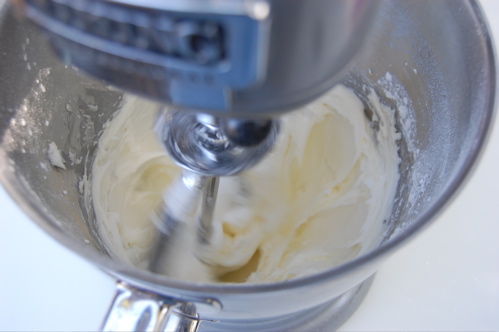
Now then, you can see from the texture that it’s rather paste-like at this point. Nearly a frosting, but a little too stiff.
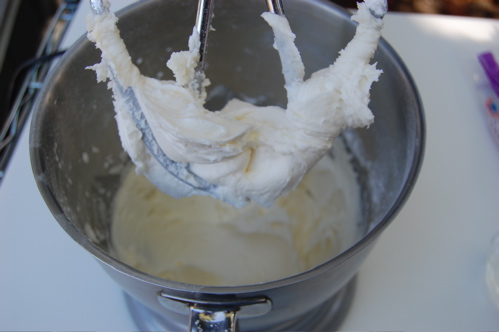
So, with the mixer running on high, dribble a tablespoon or two of water down into the bowl. This will soften and “fluff” the buttercream up.
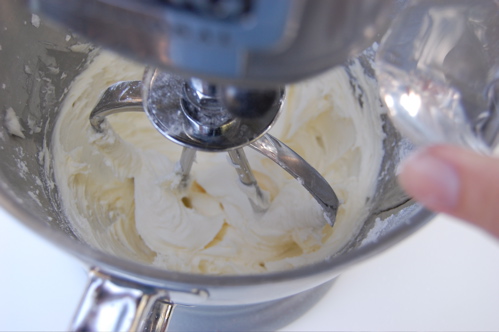
And you’re done.
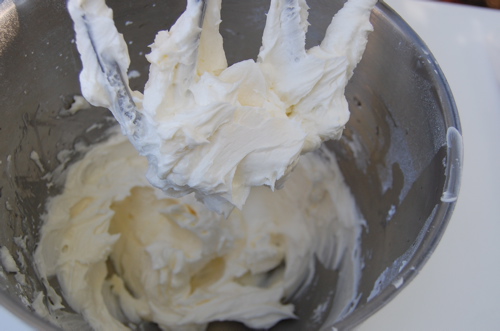
As with other buttercreams, now is when you add flavoring or coloring as you wish.
One key difference that you can see with this buttercream is that unlike all-butter buttercreams, this one is perfectly, pristinely white. That obviously gives it a big advantage when it comes to coloring, since the decorator doesn’t have to compensate for the normal yellow tinge.
It’s also dynamite for piping, since as I said, it’ll stand up to just about any environmental conditions. Especially when it’s made with all shortening (as it frequently is in big supermarkets or chain stores), it’s practically indestructible. It’ll stand up to high temperatures and direct sunlight, and with a little bit of cornstarch (corn flour) added — a tablespoon or two for a quantity this size — to high humidity as well.
The sacrifice is of course taste and texture. Don’t get me wrong: many, many people really like this kind of buttercream. Increasing numbers of people have never tasted anything else. However it is quite sweet compared to traditional buttercreams (it’s 4-to-3 sugar-to-fat instead of 4-to-3 fat-to-sugar), and because all powdered sugar has at least a little cornstarch in it to keep it from clumping, a faint cereal aftertaste. It’s also slightly grainy, since even though the sugar crystals in powdered sugar are so fine you can’t see them with the naked eye, they aren’t so small that our tongues can’t detect them (an amazingly sensitive device, the human tongue). Further, it also creates that slick, fatty sensation in the inside of one’s mouth, since shortening doesn’t melt at body temperature.
So then, while as I said the functional benefits of American buttercreams are undeniable, to me they come at too high a price. That’s why, given a choice, I’ll go for a traditional buttercream every time.
Hi Joe! Thanks for this recipe! I usually turn to the French recipe when making a buttercream but I always use this for ice cream cake because the texture stays creamy even in the freezer. Thanks so much!
My pleasure, Lindsey!
This is a great recipe. You saved my bacon with this one today, Joe!
Whew! Good to hear, Ellen! Cheers!
– Joe
at the end of the post, you said that given a choice, you’d go with a traditional buttercream. which kind is that? American buttercream made with all butter, or one of the other kinds? thanks! 🙂
Swiss meringue buttercream is my favorite, Marsha! 😉
– Joe
Hi Joe,
I always make Italian buttercream, but I am delivering cupcakes for a buffet tomorrow for our first humid 80 degree day. I am going to try the above recipe. I also considered cream cheese with 10x. Thoughts?
Hi Susan,
So sorry I missed this message, but I knocked off early on Friday and had a busy weekend. What did you decide upon and how did it go?
– Joe